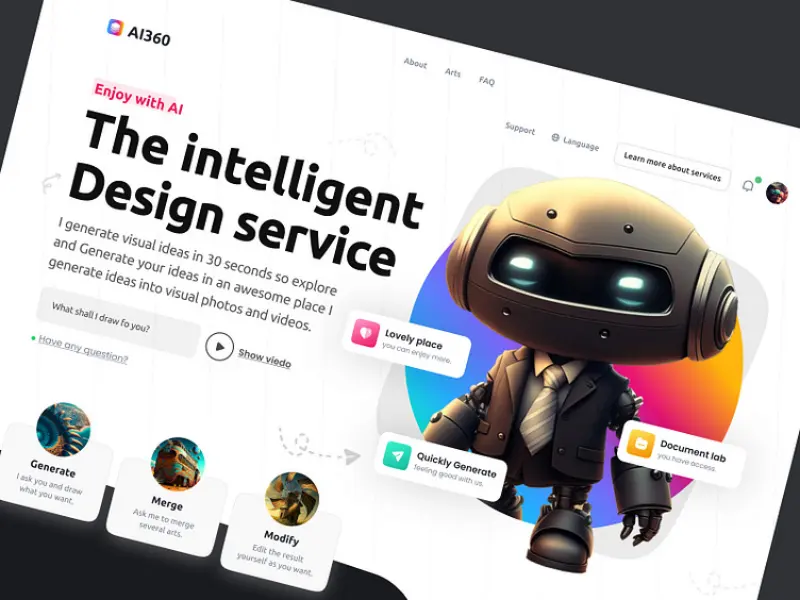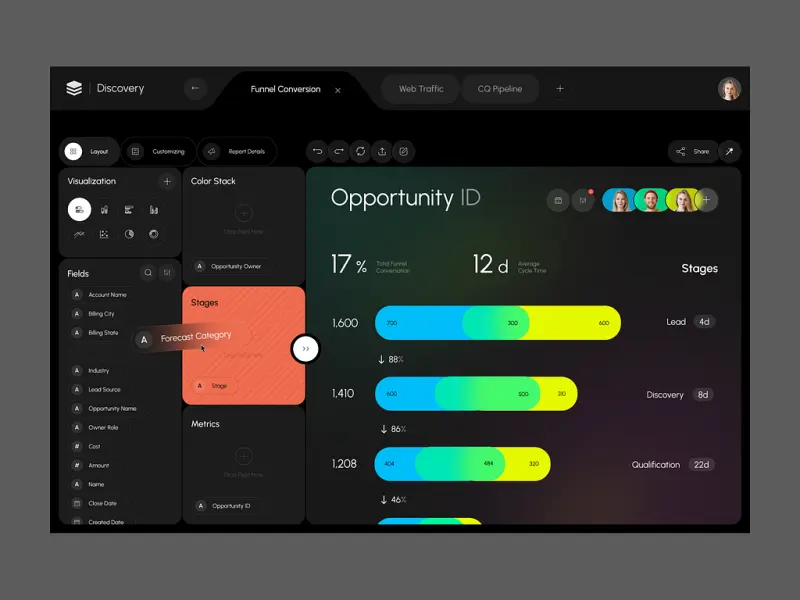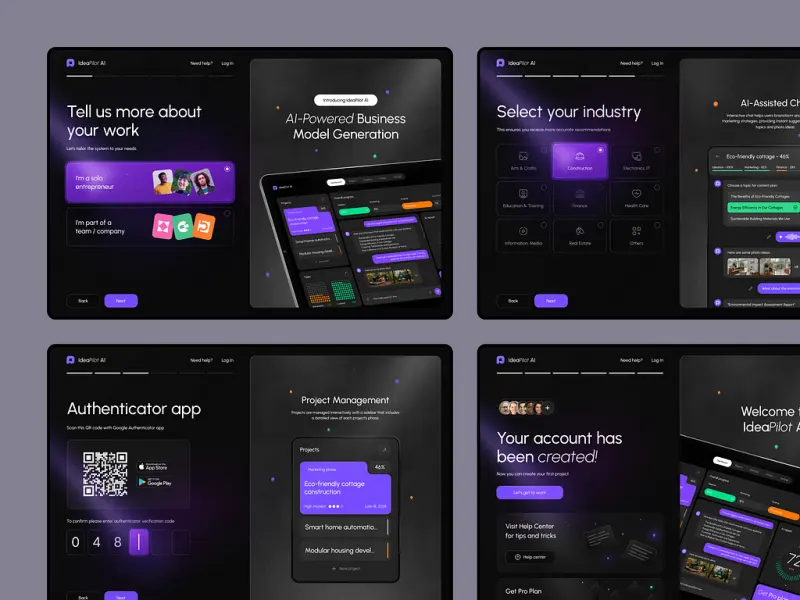AI Business Process Automation: Change Your Business To Get Ahead of The Game
- TECHVIFY Team
- 0 Comments
These days, business process automation (BPA) is the secret tool helping small businesses keep up with big companies. And it gets even better. With Artificial Intelligence (AI) in the mix, we’re moving into a world where everything runs more smoothly and productivity is off the charts. If you thought automation was a game-changer before, just wait—AI business process automation is making it easier, faster, and more affordable than ever.
I. Understanding the Fundamentals of Business Process Automation
Before diving into the intricacies, it’s crucial to first grasp what business process automation (BPA) truly entails.
Simply put, BPA is like giving your operational workflow a much-needed upgrade. It’s about creating a streamlined, automated system that handles those time-consuming, repetitive tasks, freeing you up to focus on more strategic initiatives. Whether it’s following up with customers, entering data, or monitoring your sales pipeline, automation becomes your most reliable ally, ensuring these tasks are completed efficiently.
AI in Business Process Automation
But how does this magic actually work? With the right tools and platforms in place, BPA allows you to construct a series of automated actions that are triggered by specific events. For instance, when a new lead is captured in your CRM, an automated email can instantly be sent to introduce your company and its services. It’s like having a tireless virtual assistant that works around the clock, never missing a beat.
II. Unpacking AI Business Process Automation Elements
To truly appreciate the power of AI business process automation, we need to break down its key components and understand how they work together.
Machine Learning
Machine learning (ML) is the beating heart of AI business process automation. It’s what gives systems the ability to learn from data, recognize patterns, and make decisions without needing explicit instructions. With powerful ML algorithms at its core, AI business process automation can manage vast amounts of information, making it perfect for tackling complex tasks like fraud detection, predictive maintenance, and personalized marketing.
Case Study: Amazon’s Machine Learning in Action
Amazon takes full advantage of machine learning as part of its AI business process automation to revamp inventory management, customer recommendations, and supply chain logistics. ML algorithms predict product demand by analyzing trends, automatically restocking inventory to avoid shortages or overstocking.
Amazon’s recommendation engine also uses ML to serve up personalized product suggestions based on customer preferences, driving engagement and increasing revenue. On the logistics front, ML optimizes delivery routes and schedules, improving overall efficiency and enhancing customer satisfaction. Through these innovations, Amazon has transformed its operations while delivering an exceptional customer experience.
Natural Language Processing
Natural language processing (NLP) gives AI the ability to understand, interpret, and respond to human language. It’s essential for automating tasks that revolve around communication, whether it’s assisting customers, creating content, or analyzing feedback.
Case Study: Microsoft’s NLP Integration
Microsoft uses NLP to supercharge its AI business process automation, particularly in customer support, document management, and internal communication. For example, Microsoft’s virtual assistant, Cortana, and AI-driven chatbots like Copilot, leverage NLP to efficiently manage customer inquiries, automate responses, and escalate complex issues when necessary.
NLP also plays a key role in Microsoft 365, where it automates document processing by extracting and organizing information from text-based data. Additionally, in Microsoft Teams, NLP powers features like automatic meeting summaries and smart recommendations, all of which boost productivity. Thanks to these applications, Microsoft has enhanced its efficiency across both customer service and internal operations.
Robotic Process Automation
Robotic process automation (RPA) is all about automating those mundane, repetitive tasks like data entry, invoice processing, and report generation through the use of software bots. Organizations turn to RPA to handle tasks that require speed, precision, and consistency, without the risk of human error.
Case Study: AT&T’s RPA Implementation
AT&T, a major player in the telecommunications industry, employs RPA to streamline its billing, invoicing, and customer service processes. RPA bots automatically generate invoices, process payments, and respond to routine customer queries, reducing errors and speeding up operations.
Beyond customer service, AT&T uses RPA in network management to monitor and maintain its telecom infrastructure. RPA also plays a vital role in modernizing legacy systems, allowing AT&T to improve productivity, lower operational costs, and deliver better customer support. This automation has enabled AT&T to operate more reliably and efficiently.
III. Key Advantages of AI Business Process Automation
As you can see from the real-world examples above, AI business process automation (AI BPA) delivers a wide range of benefits. Let’s recap the essential perks AI brings when automating business processes.
Boost in Productivity
The productivity boost is one of AI BPA’s standout benefits. By automating repetitive tasks, businesses can achieve more with fewer resources. This leaves employees free to focus on higher-level tasks that demand creativity, strategic thinking, and advanced problem-solving—areas where human input truly shines.
Reduced Costs
Cost reduction is another major advantage. AI business process automation cuts down on the need for manual labor, minimizes errors, and optimizes resource allocation. By automating routine tasks, businesses can lower operational expenses and avoid the costly mistakes that often arise from human error.
AI in BPA
Smarter Decision-Making
A significant upside of AI BPA is its ability to enhance decision-making. With AI’s capability to analyze massive amounts of data, businesses can identify trends, patterns, and irregularities that would otherwise go unnoticed. This level of insight allows for decisions that are not only well-informed but also timely, helping businesses stay ahead of the curve.
Improved Compliance
AI automation dramatically reduces the likelihood of human error, which is crucial in industries with strict regulatory requirements. AI business process automationensures that processes are performed consistently and in line with industry standards, helping businesses avoid fines and penalties while staying compliant.
AI Technologies in Business Process Automation
Just like any other industry, businesses looking to adopt AI technologies for automating processes are encountering incredible opportunities. Recent advancements in AI, including Machine Learning (ML), Deep Learning (DL), and Natural Language Processing (NLP), have significantly improved the ability to automate various business functions. These innovations now offer businesses higher levels of accuracy, efficiency, scalability, and flexibility, opening up fresh opportunities for automation across a wide range of industries.
Have a Project Idea in Mind?
Get in touch with experts for a free consultation. We’ll help you decide on next steps, explain how the development process is organized, and provide you with a free project estimate.
IV. Challenges of AI Business Process Automation (with Solutions)
While AI BPA offers a host of advantages, its implementation comes with its own set of challenges. To ensure a smooth adoption, businesses need to carefully consider these potential hurdles.
Challenge 1: Integrating with Existing Systems
One of the most significant challenges with AI BPA is integrating it with existing systems, especially in large organizations with complex infrastructures. Legacy systems weren’t designed to work with AI-powered processes, and merging the two can be both time-consuming and expensive.
Solution:
Before rolling out AI BPA, businesses should thoroughly assess their current systems and flag any potential integration issues. Partnering with experienced technology providers—like TechMagic—can help ensure a seamless transition, saving both time and money in the long run.
Challenge 2: Data Security and Privacy
AI business process automation systems often handle large volumes of sensitive data, making data security and privacy paramount. Ensuring that AI systems adhere to data protection regulations, such as GDPR, is essential to avoid legal liabilities and potential reputational damage.
Solution:
Organizations must prioritize data security by implementing strong encryption, access controls, and continuous monitoring. Regular security audits and compliance checks are also critical to maintaining data integrity and protecting against cyber threats. In fact, AI itself can be leveraged to revolutionize cybersecurity efforts.
Challenge 3: Employee Adaptation and Training
AI BPA can have a profound impact on the workforce, particularly for employees whose roles are heavily automated. While automation enhances efficiency, it can also raise concerns about job displacement and require employees to learn new skills or adapt to different roles.
According to research from Oxford Economics, automation could displace up to 20 million jobs in the manufacturing sector alone by 2030. Sectors like storage, logistics, and manufacturing are especially at risk. In the U.S., an estimated 25% of jobs could be disrupted by automation.
However, it’s not all bad news. Around 33% of the jobs available today didn’t exist 25 years ago, highlighting the number of new roles that AI technology creates. In fact, 70% of professionals view automation as an opportunity to move into better, higher-paying jobs, provided they upskill and adjust to the changing landscape.
Solution:
Businesses must take an active role in helping their workforce adapt to AI business process automation. Offering training and reskilling programs is key to ensuring employees can transition into new roles. Engaging employees in the AI implementation process and clearly communicating the benefits of automation will help build trust and foster a more positive outlook on the changes ahead.
V. The Future of AI in Business Process Automation
As businesses keep adopting AI to improve and automate their processes, several trends are starting to take shape. These trends promise to make things more efficient, personalized, and help with better decision-making across industries. Let’s take a look at what’s coming for AI in business process automation:
1. Improvements in AI Technology
AI is evolving quickly, thanks to ongoing research and development. Future improvements will lead to smarter algorithms that can handle more complex tasks and make better decisions. Some key areas to watch include:
-
Natural Language Processing (NLP): Better NLP will help AI systems understand and interact with human language more effectively, improving communication and reducing misunderstandings in areas like customer service or data entry.
-
Computer Vision (CV): As CV improves, AI will get better at analyzing and understanding images and videos, which will help with things like quality control, security monitoring, and inventory tracking.
-
Deep Learning: Advanced deep learning algorithms will allow AI to learn from large amounts of data, spotting trends and making predictions more accurately, especially in areas like fraud detection and market analysis.
AI business process automation
2. Combining AI and the Internet of Things (IoT)
The combination of AI and IoT will change how businesses operate. IoT devices create huge amounts of data, and AI can help make sense of it. This combination will lead to:
-
Smarter Devices: IoT devices powered by AI will become more independent, able to make decisions and complete tasks on their own without needing human input. This will improve how businesses run day-to-day tasks.
-
Predictive Maintenance: AI can use data from IoT sensors to predict when equipment might fail and schedule maintenance before issues arise, cutting down on downtime and repair costs.
3. AI-Driven Predictive Analytics
AI will make predictive analytics even more powerful. AI systems will help businesses predict trends, understand customer behavior, and make better forecasts. This will help businesses:
-
Plan Resources: AI can help companies manage their resources by predicting future needs based on market trends and customer demands.
-
Make Strategic Choices: AI’s ability to provide insights will help businesses fine-tune their strategies, giving them a competitive edge.
4. AI and Autonomous Decision-Making
As AI becomes more advanced, we’ll see more businesses using AI to make decisions without human involvement. AI systems will handle tasks and decisions based on real-time data and set rules. Some key aspects include:
-
Routine Decisions: AI will take over more routine decisions, like approving invoices or scheduling tasks, letting employees focus on more important work.
-
Critical Decisions: For more complex or ethical decisions, humans will still be needed to provide oversight, ensuring that AI supports rather than replaces human judgment.
5. Making AI More Accessible
AI tools are becoming easier and cheaper for small businesses and startups to use. This trend will:
-
Level the Playing Field: Small companies will be able to use AI to improve their operations and compete with larger businesses, driving innovation in many industries.
-
Wider Adoption: As AI becomes more user-friendly and affordable, more businesses will start using it, leading to faster and broader adoption in various areas.
6. Hyperautomation
Hyperautomation takes automation even further by using AI and other tools to automate as many processes as possible within a business. This approach aims to:
-
Automate More Processes: Businesses will be able to automate tasks across different departments, leading to smoother operations and greater efficiency.
-
Increase Business Value: Hyper-automation will improve overall performance by automating complex workflows and connecting different systems. It will help businesses run more smoothly and add more value.
Conclusion
AI-driven business process automation (BPA) is no longer just a tool—it’s a strategic necessity for companies looking to streamline operations, cut costs, and stay competitive. Whether you’re a small business trying to keep up with larger players or an enterprise looking to optimize efficiency, AI offers endless possibilities to boost productivity and enhance decision-making. From machine learning and NLP to predictive analytics and hyper automation, the future of BPA is set to transform how businesses operate.
Ready to take your business to the next level? Contact TECHVIFY today for a free consultation. Our team of experts is here to help you design, develop, and implement custom AI-powered automation solutions that fit your unique needs.
TECHVIFY – Global AI & Software Solutions Company
For MVPs and Market Leaders: TECHVIFY prioritizes results, not just deliverables. Reduce time to market & see ROI early with high-performing Teams & Software Solutions.
- Email: [email protected]
- Phone: (+84)24.77762.666








